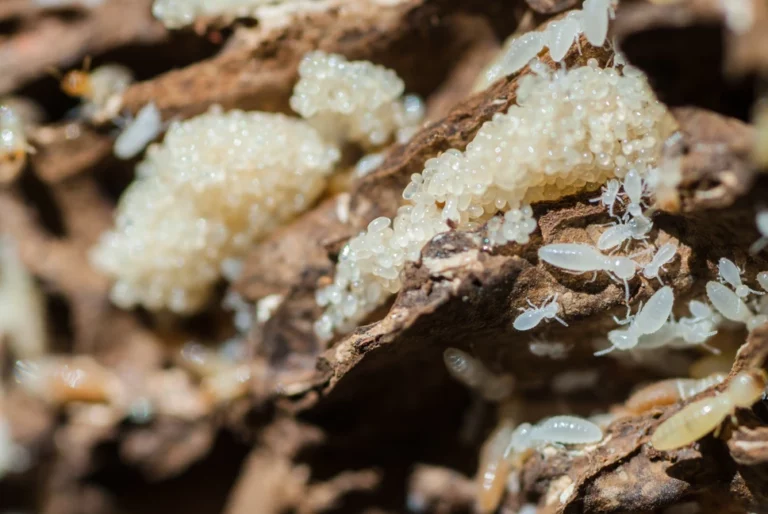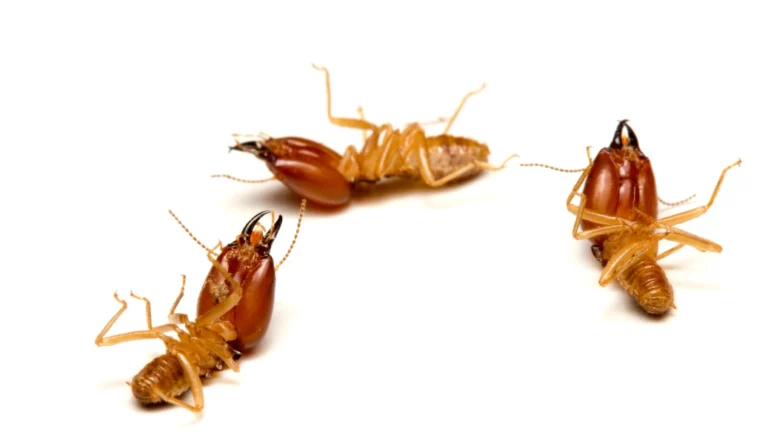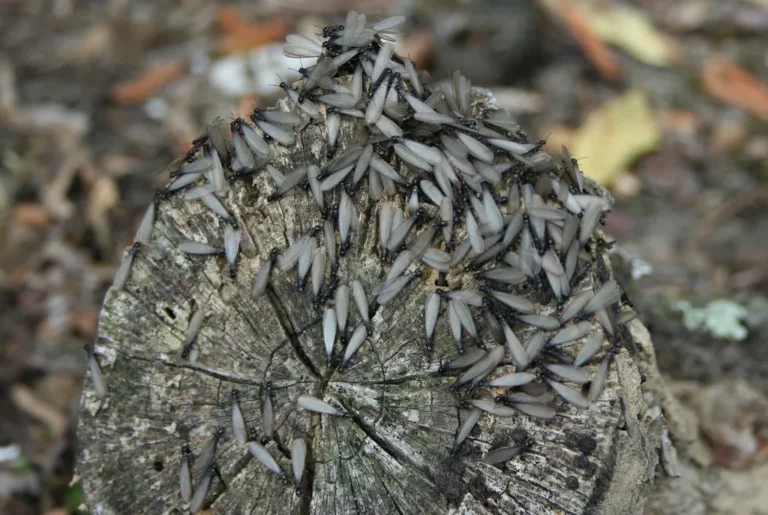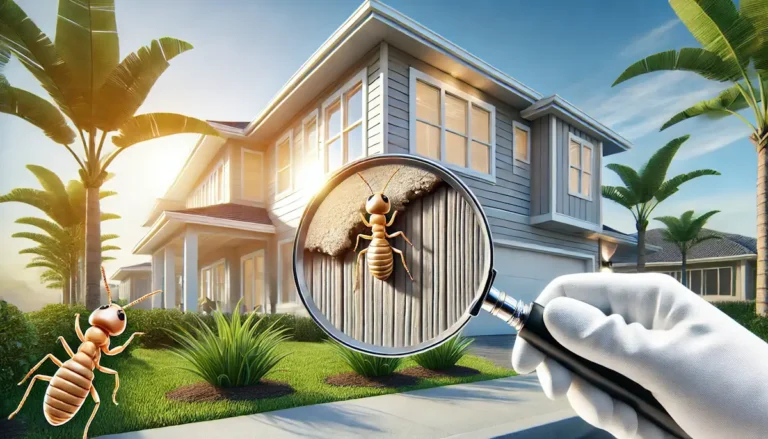Table of Contents
ToggleThe subterranean termite is the most destructive type of termite. They build unique tunnels, also known as mud tubes, to find food, stay safe from the elements, and keep in touch with the soil. They’re well-known for their ability to do this.
They can easily find food sources and maintain contact with the soil. These termites are also known for building large underground termite colonies.
Subterranean termites are a type of termite that lives in underground colonies. They have saw-toothed jaws that they use to bite off tiny fragments of wood, allowing them to eat wood continuously. They pose a danger to houses across the United States, as they’re present in every state apart from Alaska. They have the ability to cause significant harm to building structures over time, which can result in total collapse.
What do subterranean termites look like?
Subterranean termites are insects that build tunnels and feed on wooden structures. There are three castes of subterranean termites: reproductives, workers, and soldiers. Each caste has distinct physical characteristics that set them apart from each other.
The members that make up the reproductives in a termite colony are the king, queen, and alates. The queen plays a significant role in the colony’s expansion and is the biggest termite, whereas the king is much smaller. Alates, also called swarmers, have slightly milky-colored wings and a long, dark brown to almost black body. These creatures usually measure about ¼ to ½ inch in length, with wings barely visible hairs.
While swarmers possess wings, workers and soldiers do not. Workers, who measure around ¼ inch or less, exhibit cream-colored bodies and have tiny jaws that enable them to gnaw at wood and transport objects.
Soldiers have easily identifiable features such as their broad rectangular heads and wide, flattened bodies. Their heads are usually darker and more brown than their bodies, which are creamy white like those of workers. Additionally, they are recognized by their large mandibles.
Identification
There are three main groups of termites that are known as subterranean, drywood, and dampwood.
Subterranean termites live in underground colonies and can be identified by several factors. The swarmers, also known as alates, are around ¼ to ½ inch long and are typically a dark-brown to black color. They have two pairs of wings that are nearly equal in length. Workers have no wings and are about a 1/4 inch long and cream-colored.
Meanwhile, soldiers also lack wings and are creamy-white in color with large mandibles. Their heads are typically brownish in color, and they serve as defenders of the termite colony.
Building their nests underground, subterranean termites have a tendency to accumulate soil or mud within the wood tunnels they feed on. Subterranean termites often cause wood damage that looks distinctive because they favor the softwood portion and ignore the hardwood part. While drywood termites feed across the grain, subterranean termites feed along the grain.
Their name suggests that most nests are underground, but sometimes above-ground nests can occur in well-established colonies.
To learn more about termites in Florida, check out our blog “Termites in Florida: The Complete Guide to Identification and Control”.
Habitat
These insects reside in underground colonies and create tunnels to find food. They construct mud tubes to access food sources above ground level. Their survival is reliant on moisture.
Diet
Wood and other cellulose materials make up the diet.
Reproduction
The growth rate from egg to adult varies among species. Each colony has a primary queen who can lay thousands of eggs during her lifetime. Additionally, supplementary reproductives can lay eggs in an established colony. For more information, click here.
Distribution
Termites that live underground can be found in all the American states except Alaska. They tend to be less numerous in colder regions and are more common in warmer, southern states. In particular, they thrive in the humid, subtropical areas.
More Information
When building a new home, termite inspection is vital, especially in an area that’s prone to termites. Obtaining estimates from trustworthy specialists who are capable of termite control against these destructive pests is a wise decision. On Demand Pest Control experts have the knowledge and tools needed to prevent termite damage and save homeowners from losing their property. Additionally, they can provide valuable tips on how to keep termites at bay.
Termite diversity is remarkable, with more than 2,300 species identified worldwide. Numerous termite species inhabit tropical and subtropical areas and can be found in diverse environments, ranging from deserts to rainforests. Notably, over 50 species are known to inhabit the United States, causing significant damages to buildings and homes. These species collectively incur an annual cost of $1 billion in property destruction, with around 350,000 structures affected each year.
There are different types of termites. Each type has its unique way of constructing colonies and preferred climate. These include subterranean, dampwood, and drywood termites. A subterranean termite colony creates complex networks of tunnels and chambers to form their colonies.
To access above-ground wood, worker termites craft protective tunnels out of mud and saliva. The termites infest wood by filling it with soil to maintain high humidity levels, making it easier for them to digest. One of the signs of a subterranean termite infestation is the presence of mud tunnels on the foundation or walls of your home.
Subterranean vs. Drywood
Drywood termites construct their nests inside of wood. This includes wooden trim, lumber, and siding, and can grow and thrive without the need for soil. They obtain water from the wood, unlike subterranean termites. Additionally, they intrude upon books, furniture, and floors.
Drywood termites are difficult to identify because their waste accumulates in small piles that resemble pellets. These termites do not need soil for their growth and obtain water from the wood. Additionally, they intrude upon books, furniture, and floors. Identifying drywood termites is relatively complicated because they become apparent only when their waste materials gather in small piles, which look like pellets.
Subterranean vs. Dampwood
Dampwood termites like to build colonies in wood that is damp or decaying. This can include wood that is consistently touching wet soil. Termites are often seen in the Southwest and Pacific Coast regions, with occasional sightings in Florida. If your house has moisture problems such as leaky pipes or damp areas, it may be vulnerable to dampwood termite infestation.
The purpose of the study was to evaluate the effectiveness of the new medication in reducing symptoms of depression. Participants were randomly assigned to receive either the medication or a placebo. Results showed a significant reduction in symptoms for the group that received the medication compared to the placebo group. These findings suggest that the medication may be a viable option for treating depression.




